Tools for mineral identification include hand lenses (lower left), a penny for testing hardness (center), a streak plate (lower right), and an identification guidebook (top).
Click on image for full size
Windows to the Universe
Make Your Own Mineral Identification Kit!
Stick the following items into a small bag so that you can take them with you whenever you go hunting for minerals.
- Hand lens is helpful for identifying small mineral crystals or fossils.
- A small, white porcelain streak plate allows you to perform streak tests.
- A penny and a small glass plate are useful for testing hardness.
- Kits with samples of common minerals identified are available from
science and nature stores; they help you identify minerals by comparing
an unknown mineral to ones that are already identified.
- Printouts of the examples of crystal shapes from Windows to the
Universe (or see if your book has similar pictures) allow you to identify
crystal shapes of minerals.
- Include a field book or journal and a pencil to record where in the world
you found your minerals.
- A guidebook for rocks and minerals with nice color pictures and language that you understand
Last modified March 13, 2003 by Lisa Gardiner.
You might also be interested in:
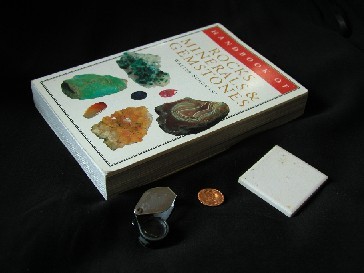
Are you going out to search for rocks and minerals? How will you know what types you have found? Identification guidebooks for rocks and minerals can be very helpful. Pick one that has nice color pictures
...more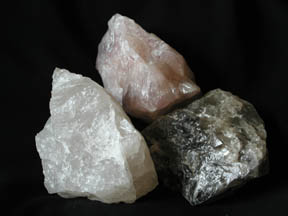
Spotting minerals is fun! There are many different types of minerals, each with a different name and a special set of characteristics. So, if you find a mineral that you do not recognize, you can use
...more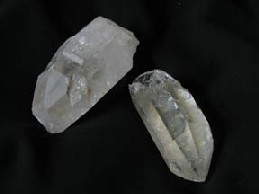
Quartz is one of the most common mineral in Earth’s crust! Silica (Si) and Oxygen (O) are the only elements within pure quartz. If a cooling magma has silica leftover after feldspars form, quartz is likely
...more
Mica minerals make some rocks sparkle! They are often found in igneous rocks such as granite and metamorphic rocks such as schist. They sparkle because light is reflected on their flat surfaces, which
...more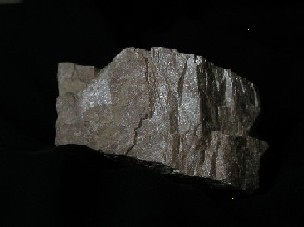
Feldspar is the most common mineral in the Earth’s crust, so you are very likely to find it in the rocks you collect! It is found it all of the three rock types, but is most common in intrusive igneous
...more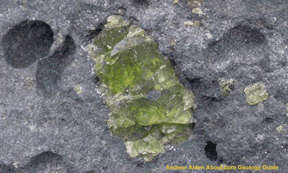
Olivine looks like little green crystals. It is typically found in some igneous and metamorphic rocks. Often the crystals are so small that you need to use your hand lens or magnifying glass to see them
...more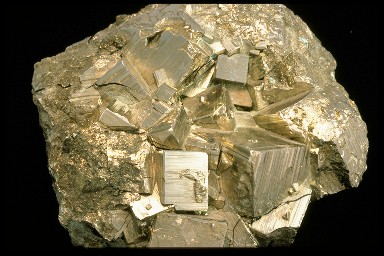
So far, over 2000 minerals have been found, and every year new ones are discovered. That's a lot of minerals! Don't worry! You don't need to know them all to be a rock hound. In fact, only a few dozen
...more














